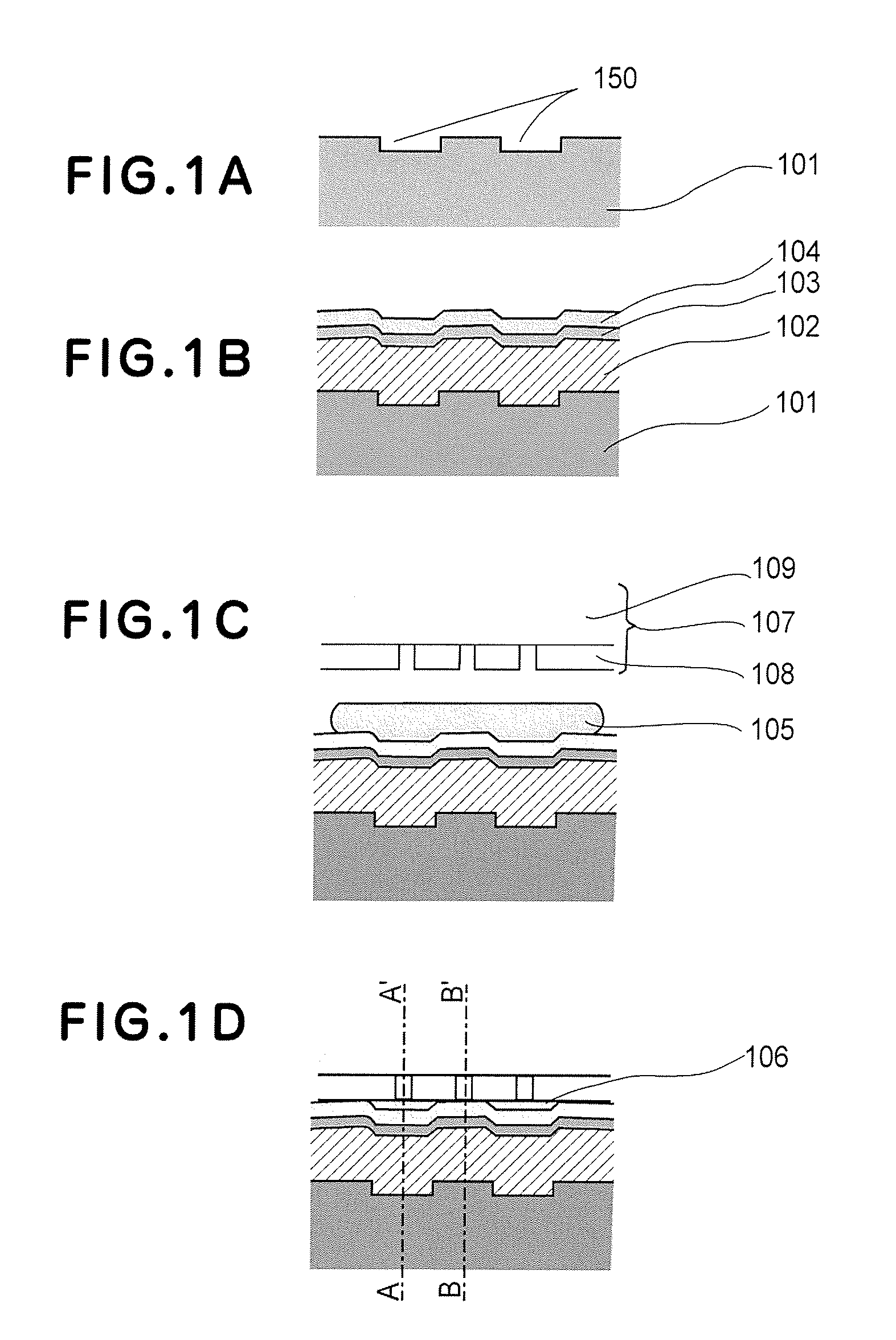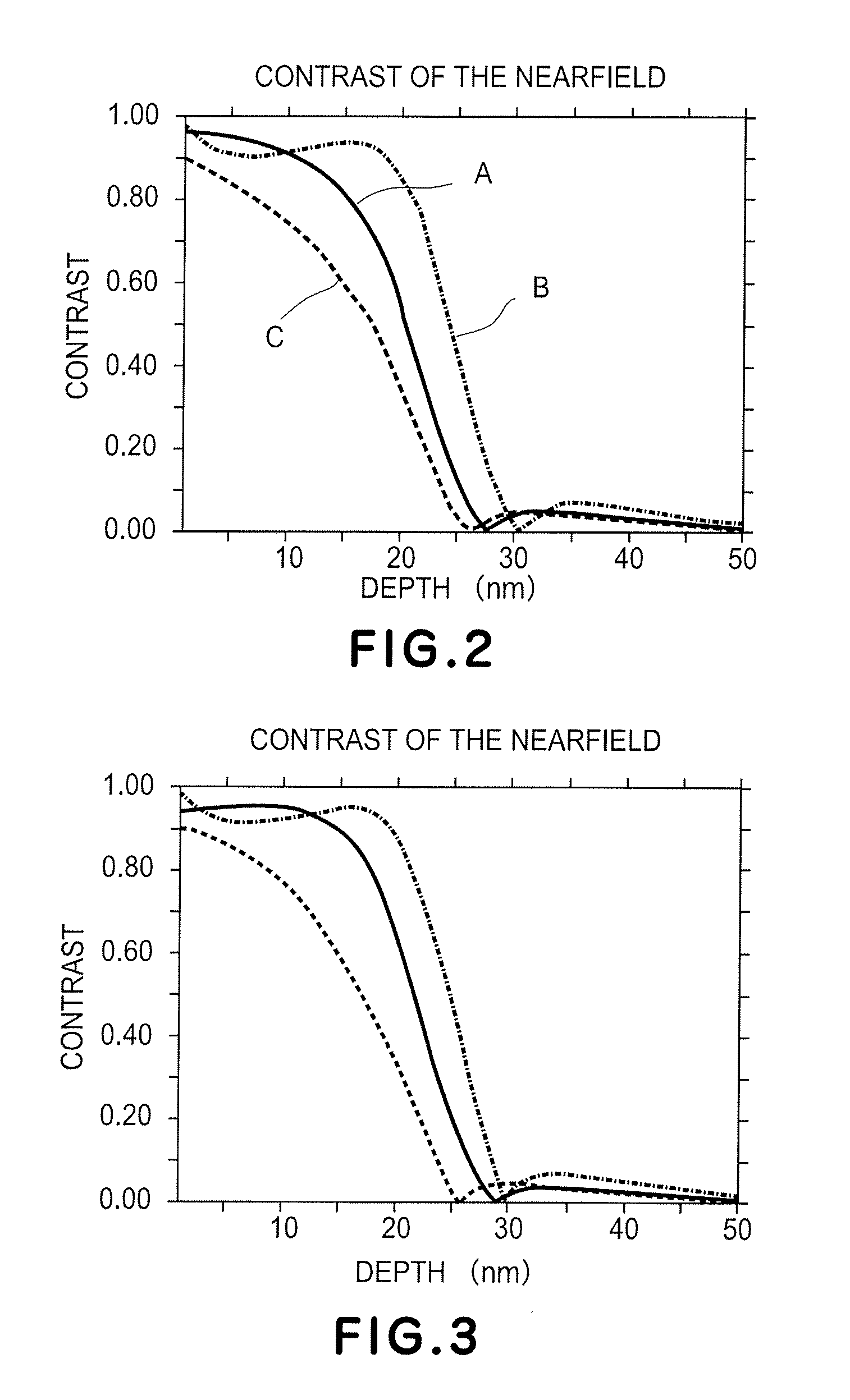Near-field exposure method
a near-field and exposure method technology, applied in the field of near-field exposure method, can solve the problems of difficulty in controlling the unevenness of the exposure state, the further shortening of the wavelength of the light source, and the complexity of the device structur
- Summary
- Abstract
- Description
- Claims
- Application Information
AI Technical Summary
Benefits of technology
Problems solved by technology
Method used
Image
Examples
Embodiment Construction
[0017]Preferred embodiments of the present invention will now be described with reference to the attached drawings.
[0018]A near-field exposure method according to an embodiment of the present invention may include closely contacting an exposure mask having a light blocking film with small openings of a size not greater than a wavelength of exposure light of an exposure light source, to a photoresist layer formed on a substrate having surface unevenness, and projecting the exposure light of the exposure light source onto the exposure mask so that the photoresist is exposed based on near-field light escaping from the small openings, wherein the near-field exposure may be carried out while keeping both a contact region in which the light blocking film and the photoresist layer are in contact with each other and a liquid region in which an interspace between the light blocking film and the photoresist layer is filled with a liquid, coexisting between the light blocking film and the phot...
PUM
| Property | Measurement | Unit |
|---|---|---|
| height | aaaaa | aaaaa |
| thickness | aaaaa | aaaaa |
| thickness | aaaaa | aaaaa |
Abstract
Description
Claims
Application Information
 Login to View More
Login to View More - R&D
- Intellectual Property
- Life Sciences
- Materials
- Tech Scout
- Unparalleled Data Quality
- Higher Quality Content
- 60% Fewer Hallucinations
Browse by: Latest US Patents, China's latest patents, Technical Efficacy Thesaurus, Application Domain, Technology Topic, Popular Technical Reports.
© 2025 PatSnap. All rights reserved.Legal|Privacy policy|Modern Slavery Act Transparency Statement|Sitemap|About US| Contact US: help@patsnap.com


